What is Developmental Dysplasia of the Hip (DDH)?
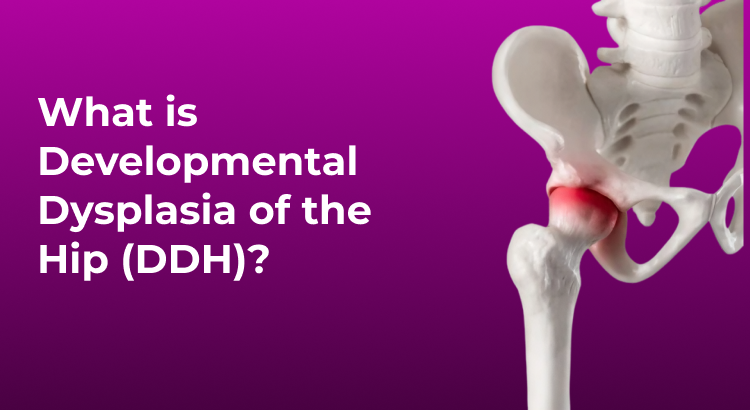
What is Developmental Dysplasia of the Hip (DDH)?
Developmental Dysplasia of the Hip (DDH) is a condition in which the hip joint is not formed normally during foetal development. The hip joint consists of the femoral head (the ball) and the acetabulum (the socket), and in DDH, these two parts do not fit together as they should. This can lead to instability or dislocation of the joint, and if left untreated, may cause delayed walking, difficulty moving, and potentially arthritis in early adulthood.
DDH can be classified based on the age at which it is diagnosed and its severity:
At Birth: The hip joint may be dislocated or unstable but not yet causing symptoms.
In Neonates and Infants: The hip may still be in an unstable position, but may not yet show signs of dislocation.
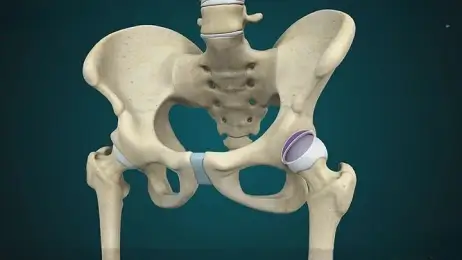
In Toddlers/Walking Age: Some children may begin to show signs of difficulty in walking or delayed walking capability.
In Adolescents: Left untreated, DDH can lead to persistent instability and joint deformity, potentially causing hip arthritis in early adulthood.
Causes of DDH
The exact cause of DDH is not fully understood, but several factors can increase the risk:
Genetics : A family history of DDH increases the risk.

Position in the womb : Breech positioning or limited space in the uterus may contribute to hip dislocation.

Gender : DDH is more common in females than males.

Symptoms of Meniscal Injury :
The most common symptoms of a meniscal injury include:
Pain, especially along the joint line of the knee
Swelling, which may develop hours after the injury
Locking or catching sensations in the knee
Limited range of motion or difficulty straightening the leg
Weakness or instability in the knee, especially when bearing weight
A feeling of the knee “giving way” during activity
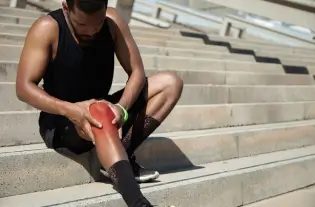
Other conditions : Certain neuromuscular conditions or abnormal ligament development may also increase the risk.
Symptoms of DDH at Different Ages
At Birth (Neonatal DDH):
DDH is typically asymptomatic at birth, and many infants with mild forms of DDH have no visible symptoms. However, signs that may prompt further investigation include:
Asymmetry of the hips: Uneven skin folds on the thighs or buttocks.
Limited hip movement: A “clicking” sound when the hip is moved or resistance to normal movement.
Leg length discrepancy: One leg may appear shorter than the other.
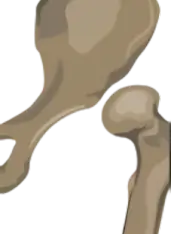
In Neonates and Infants (Up to 6 Months):
In the first few months, signs of DDH may include:
Clicking or popping sounds when moving the hip.
Uneven hip or leg positions.
Difficulty in the child’s ability to achieve normal developmental milestones, such as rolling or crawling.
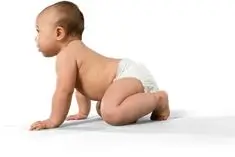
Walking Age (1-3 Years):
As the child begins to walk, signs of untreated DDH may become more apparent, including:
Limping or walking with an abnormal gait.
Pain in the hip or leg, particularly after walking or activity.
Reduced range of motion in the hip.
Unequal leg length or a leg that turns outward.
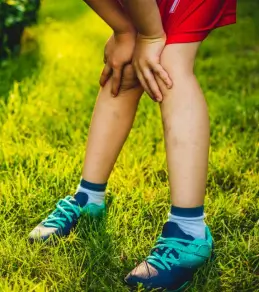
Adolescents (3-16 Years):
If DDH is left untreated or diagnosed late, adolescents may experience:
Persistent hip pain, particularly with activity or weight-bearing.
Hip joint instability, causing the hip to “give way.”Arthritis-like symptoms (e.g., stiffness, limited movement).
Leg length discrepancy or altered gait.
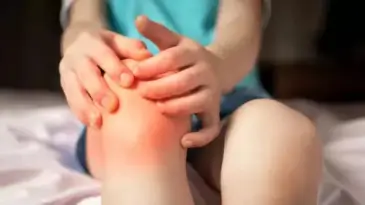
How is DDH Diagnosed?
Physical Examination: At birth, a pediatrician or orthopedic surgeon will assess the newborn’s hips for signs of instability using specific tests and maneuvers to detect hip dislocation.
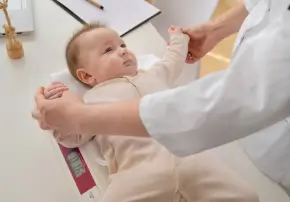
Imaging:
Ultrasound : For infants, an ultrasound is commonly used to examine the hip joint and assess the stability of the femoral head in the acetabulum.
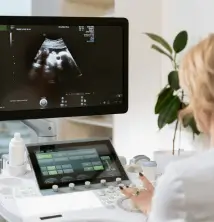
X-rays: In older children and adolescents, X-rays are often used to assess the alignment and condition of the hip joint.
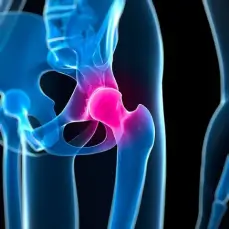
Treatment for DDH
The treatment of DDH depends on the age at diagnosis and the severity of the condition.
Early diagnosis and appropriate treatment are crucial to prevent long-term complications, including hip arthritis.
Treatment Options for Meniscal Injuries :
The treatment for a meniscal tear depends on several factors, including the type of tear, its location, the patient’s age, and the severity of the symptoms. In children and young people, the goal is to preserve the meniscus and prevent long-term damage to the knee joint, which may lead to osteoarthritis in the future.
1. Treatment in Newborns (0-6 Months)
Harness treatment:
For early diagnosed DDH, the harness is often used to hold the hip joint in a stable position while allowing for normal growth. The harness is worn for several months to help the femoral head properly fit into the acetabulum.

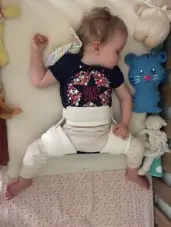
Closed Reduction:
In some cases, if the harness does not work, the hip may need to be gently repositioned under anaesthesia and then immobilised in a cast (spica cast).
2. Treatment in Infants (6-18 Months)
Closed Reduction and Spica Cast:
If the hip is not stable after 6 months, a closed reduction procedure (where the femoral head is repositioned) may be performed under anaesthesia, followed by immobilisation in a spica cast for several months.


Open Reduction:
If closed reduction is unsuccessful, surgery may be required to realign the femoral head and acetabulum. This involves an incision and possibly additional procedures to stabilise the hip.
3. Treatment in Toddlers and Children (1-3 Years)
Surgical Intervention:
In children older than 18 months, surgery is usually required to reposition the femoral head and stabilise the joint. This may involve open reduction and possibly femoral and / or pelvic osteotomy (surgical repositioning of the bones).
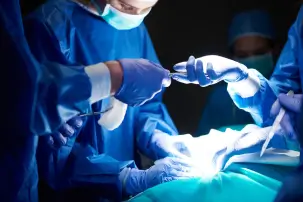

Post-Operative Care:
After surgery, the child may need to wear a cast or brace and undergo physical therapy to restore joint function.
4. Treatment in Adolescents (3-16 Years)
Surgical Procedures : For adolescents with DDH that has been left untreated, surgery is necessary to correct the deformity and prevent arthritis in the future. This may include:
Pelvic and / or Femoral Osteotomy: Repositioning the hip joint through surgery, which may involve cutting and repositioning the bones of the pelvis or femur.
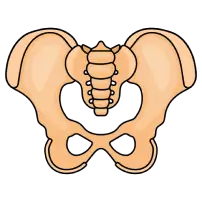
Hip Arthroscopy: In some cases, arthroscopic surgery may be used to remove damaged cartilage and repair the joint.
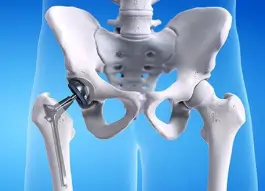
Hip Replacement: In cases of severe arthritis or irreversible damage to the joint, a hip replacement may be necessary in late adolescence or early adulthood.
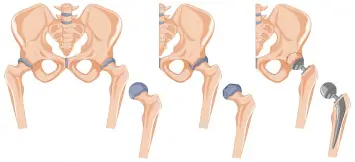
Why Choose Mr. Tahir Khan for DDH Treatment?
Mr. Tahir Khan is a Consultant Orthopaedic Surgeon at the Royal National Orthopaedic Hospital (RNOH), specialising in paediatric and adolescent hip conditions, including DDH. With extensive experience in the treatment of complex hip disorders, Mr. Khan is known for
his comprehensive and patient-centred approach to managing DDH, from birth through adolescence.
Mr. Khan is particularly skilled in:
- Early diagnosis and treatment of DDH, ensuring the best possible outcomes for newborns and young children.
- Minimally invasive techniques, including arthroscopic and keyhole surgery, when appropriate, to ensure faster recovery and less scarring.
- Multidisciplinary care, working closely with physiotherapists, paediatricians, and other specialists to provide a holistic treatment approach.
- His expertise, combined with the world-class facilities at the RNOH, makes him a leader in the field of hip care for children and young people.
What to Expect During Treatment with Mr. Khan
Initial Consultation: Mr. Khan will perform a detailed assessment, including a physical
examination and review of imaging studies. He will discuss treatment options and create a
personalised care plan for your child.

Pre-Surgery Assessment: If surgery is necessary, Mr. Khan will ensure that your child is well-prepared, explaining the process in detail and addressing any concerns.

Surgical Intervention: For more complex cases, surgery may be required. Mr. Khan will perform the procedure using the most appropriate techniques for your child’s age and condition.
Post-Surgery Care: Following surgery, your child will be monitored closely for recovery, with a structured rehabilitation plan to restore movement, strength, and stability in the hip.

Long-Term Follow-Up: Regular follow-up appointments will be scheduled to monitor the progress of healing and to ensure the hip joint is functioning optimally as your child grows.

Recovery After Knee Arthroscopy
Recovery following knee arthroscopy is typically quicker than with traditional open surgery, with most patients experiencing:
Less pain and swelling due to the minimally invasive nature of the procedure.
Shorter hospital stays, with many patients discharged on the same day.
A gradual return to activity with proper rehabilitation, which includes strengthening exercises and flexibility training.
The rehabilitation process is critical to achieving a successful outcome. Mr. Khan and his team will provide tailored guidance to ensure a smooth recovery, and regular follow-up appointments will monitor progress.
Contact Information
For more information or to schedule a consultation with Mr. Tahir Khan, please contact:
- Royal National Orthopaedic
- Portland
- Princess Grace
- Spire Bushey Hospital
